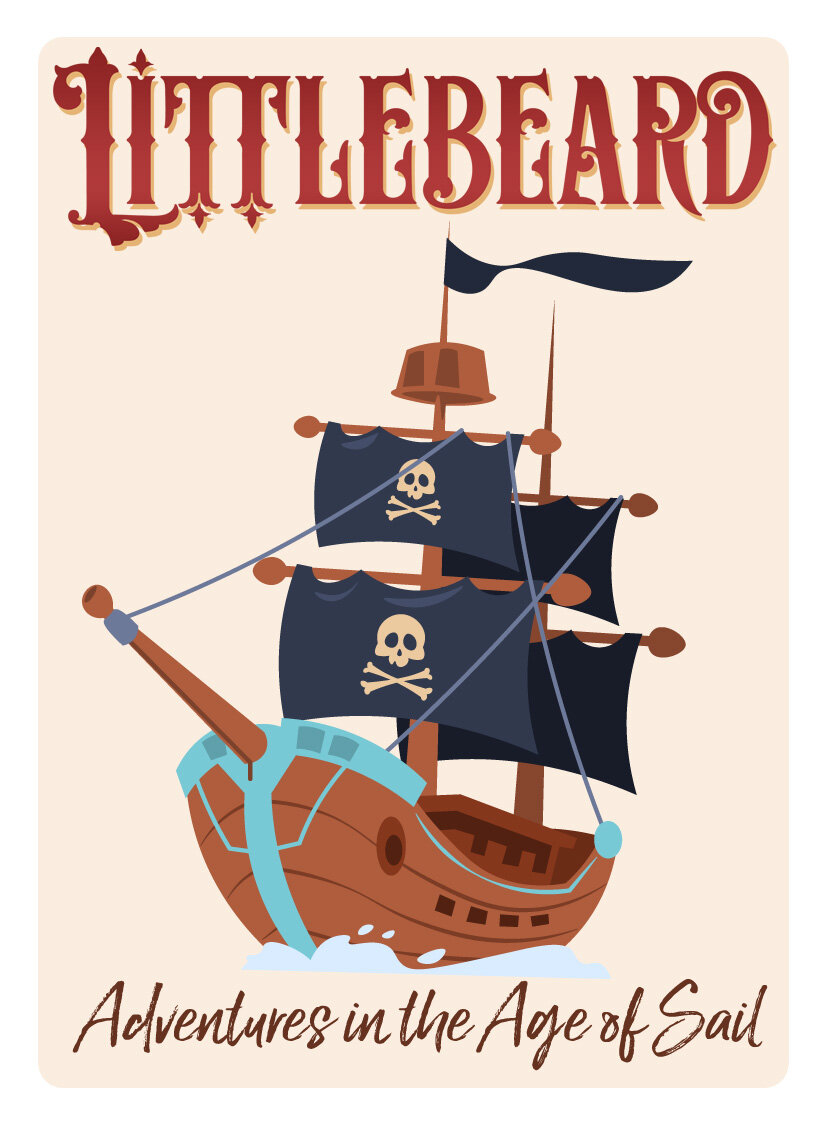Littlebeard
Littlebeard is a set of rules for tabletop miniatures, focusing on realistic sailing and quick, easy play. The game has been in development for many years, and was formerly known as Cagway Bay.
You can play Littlebeard with any set of model ships. Or you can build your own, using the plans below.
Game Ahoy!
Littlebeard is a quick-playing miniatures game about adventures in the age of sail. It is nearly diceless and refreshingly simple, using the tabletop as the open sea, and small objects as islands and obstacles. It is playable with any set of ship miniatures.
Littlebeard is currently available in an “alpha 1.0” version. In truth, this game has been around since 2013. But we’re pleased to announce a sharp-looking and self-contained draft for your enjoyment.
The Rules document includes two simple scenarios, and rules for all the ships in those scenarios. The Model Plans PDF contains the scale model designs for all ten ships in these scenarios. The Label Sheet has several versions of the game logo for labeling your box.
You’ll also need some basic components including 6-sided dice, tokens, pencils, and paper. Surely you have those.
Feedback? This game is still pretty rough, and we’d love to hear your thoughts. Send us feedback!
James Ermest’s personal set of handmade sailing ships
More About Littlebeard: James Ernest created another miniature sailing game, Pirates of the Spanish Main for Wizkids in 2003. It was a best-seller for Wizkids, and winner of an Origins Vanguard Award for inventive game design.
But ten years later, he set out to make something better, with all the lessons learned from Spanish Main. The “Cag” in “Cagway Bay” was short for Cheapass Games (Cagway Bay is also a place, better known as Kingston Harbor, Jamaica.) Since then, we have renamed the game Littlebeard, and set it in our own alternate-history Caribbean universe, Tiempo Libre. You can read a little more about Tiempo LIbre here.
Littlebeard is “nearly diceless,” meaning that movement and combat are almost entirely determine by factors like wind, position, and range. There are some dice here and there, such as when you have to put out a fire. But for the most part, the only randomness comes from the openness of the movement system.
Players decide how to allocate their action points between the Move and Shoot phases, and wind determines prioroty in each phase. In both cases it’s best to have the weather gage, which means to be upwind, because ships that are farther upwind move last, and shoot first. Wind also determines how fast ships can go, based on templates that show each ship’s speed with relation to the wind.
Littlebeard is a highly condensed sketch of real sailing and shooting, a quick-playing game with nice strategic elements. But we’re really just getting started with the design of the ships and scenarios. So if you have improvements to suggest, we’d love to hear them!
Also, please enjoy these videos of James and friends playing pirate miniatures games (including Pirates of the Spanish Main, and an early draft of Cagway Bay) on his living room floor. Note that these videos are named “Pirate Day 2” and “Pirate Day 3,” but this really is the entire collection. There was no video on Pirate Day 1.
Please Support Us on Patreon
We have a Patreon page, as you might expect, and you can help us immeasurably by joining our cadre of Hermit Crabs. If you love what we do, and you want to support our huge catalog of free content, please become a Hermit Crab today!

